Peaches
About the ingredient peaches. Including 372 recipes with peaches, nutrition data, photos, and where to find it.

Contents
What are peaches?
Peaches should be stored at room temperature and refrigeration should be avoided as this can lessen the taste of the peach. Peaches do not ripen after being picked from the tree, so storing for ripening is not necessary.
A medium peach (75 g), has 30 Cal, 7 g of carbohydrate (6 g sugars and 1 g fibre), 1 g of protein, 140 mg of potassium, and 8% of the daily value (DV) for vitamin C.
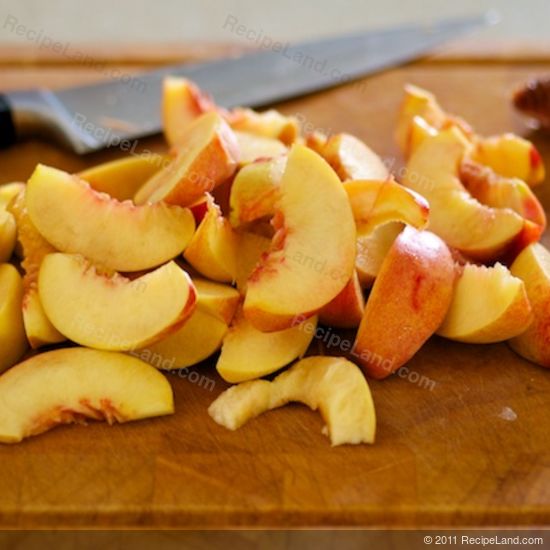
As with many other members of the rose family, peach seeds contain cyanogenic glycosides, including amygdalin (note the subgenus designation: Amygdalus). These substances are capable of decomposing into a sugar molecule and hydrogen cyanide gas. While peach seeds are not the most toxic within the rose family, that dubious honour going to the bitter almond, large doses of these chemicals from any source are hazardous to human health.

Peaches are known in China, Japan, Korea, Laos, and Vietnam not only as a popular fruit but for the many folk tales and traditions associated with it.
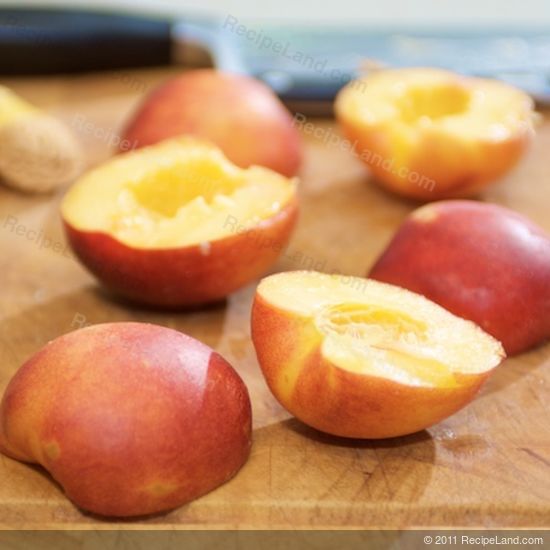
Nutrition
Nutrition Facts
Serving Size 1 NLEA serving (147g)Where found
Peaches are usually found in the produce section or aisle of the grocery store or supermarket.
Food group
Peaches are a member of the Fruits and Fruit Juices US Department of Agriculture nutritional food group.
How much do peaches weigh?
| Amount | Weight |
|---|---|
| 1 cup slices | 154 grams |
| 1 small (2-1/2" dia) | 130 grams |
| 1 medium (2-2/3" dia) | 150 grams |
| 1 large (2-3/4" dia) | 175 grams |
| 1 extra large (3" dia) | 224 grams |
| 1 NLEA serving | 147 grams |
Related
Fruits and Fruit Juices
| In Chinese: | 桃子 | |
| British (UK) term: | ||
| en français: | pêches | |
| en español: | duraznos |
Recipes using peaches
There are 372 recipes that contain this ingredient.

What's better with Ice Cream than Peaches!
GRILLED PEACHES AND VANILLA BEAN ICE CREAM

Fresh Peach Ice Cream
Fresh Peach Ice Cream recipe

Grilled Peaches with Baby Greens, Goat Cheese & Balsamic Glaze
Grilled peaches are succulent, sweet and slightly sour with the grilling flavor. They are delicious mixed with the baby greens, creamy crumbled goat cheese, and drizzled with balsamic glaze.

Grilled Peaches & Vanilla Bean Ice Cream
GRILLED PEACHES AND VANILLA BEAN ICE CREAM is a great summer desert for all to enjoy!

Pound Cake, Famous Peach
Pound Cake, Famous Peach recipe

Easy Peach Cobbler
This peach cobbler comes together in a snap and uses ingredients that you probably already have in your pantry.

Favorite Peach Ice Cream
Favorite Peach Ice Cream recipe

Homemade Peach Ice Cream
Homemade Peach Ice Cream recipe
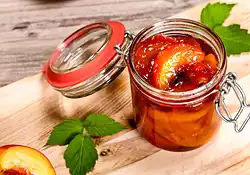
Peach Melon Conserve
Melon Peach Conserve recipe

Peach Honey Crisps with Oat, Almond & Coconut Topping
This peach crips are so delicious that I finish the whole thing within a day. I was inspired by "Cookie + Kate" (one of my favourite food bloggers, see her original recipe below). She always comes out amazing recipe ideas and beautiful photos. Don't forget to check her blog out if you love delicious and healthy food as much as I do.

Peachy Pecan Muffins
Super moist and delicious. These muffins are great for grab-go breakfast or a afternoon pick-me-up snack.

Peach Ginger Popsicles
Nothing is better than a fruity and cold popsicle in a hot summer day! Ginger and peach together make these popsicles more peachy flavor and very refreshing. Have some popsicles to help you cool down the hot summer!

Honeyed Peach Preserves
Honeyed Peach Preserves recipe

Nick's Peach Cobbler
Nick's Peach Cobbler recipe

Fruit Smoothies
We can use different kinds of fruits in this recipe, and even frutis they are ovesr ripe, and kids always enjoy drinking fruit smoothies, very tasty and healthy!
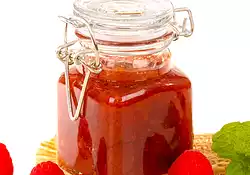
No-Cook Georgia Peachberry Jam
No-Cook Georgia Peachberry Jam recipe

Fresh Peach Cobbler
Fresh Peach Cobbler recipe
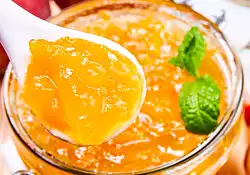
No Cook Peachy Orange Jam
No Cook Peachy Orange Jam recipe

Fresh Peach Tart
Fresh peaches fill into an almond and flour crust, the sweetness, slightly sourness, and refreshing taste from the peaches go very well with the nutty crusty. It's a light, fruity and delicious dessert that fits a hot summer day wonderfully!

Dutch Baby Pancakes
Looking for something quick to make in the mornings? This simple and tasty recipe will have people awake and ready to dig in!

Awesome Peach Coffee Cake with Oat Cinnamon Streusel
Awesome Peach Coffee Cake with Oat Cinnamon Streusel recipe

Old-Fashioned Peach Cobbler
Old-Fashioned Peach Cobbler recipe








